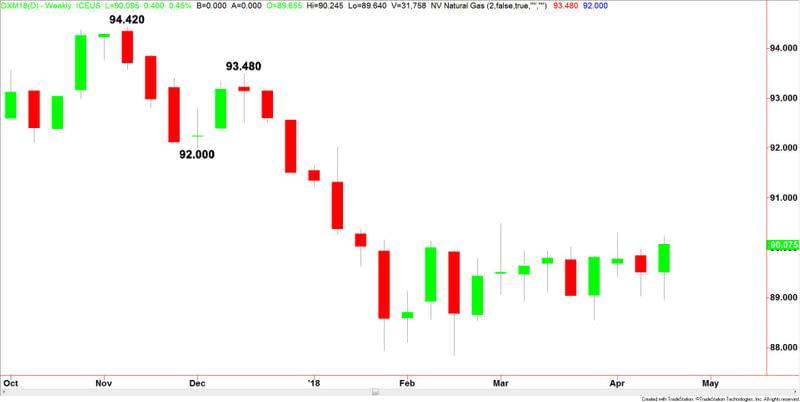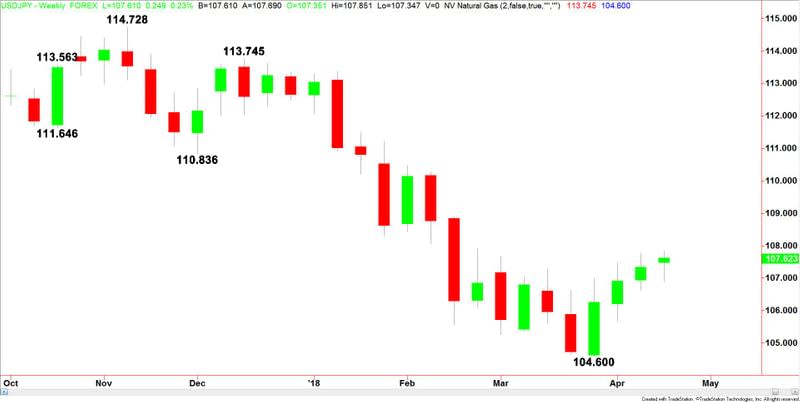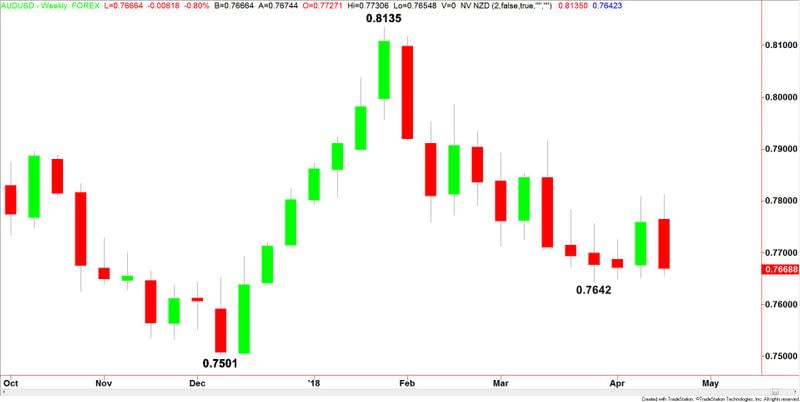U.S. Dollar Posts Weekly Gain Against All Major Currencies
Last week was a rare week for the U.S. Dollar. It posted a gain against all major currencies. Most of the strength in the Greenback back was fueled by rising U.S. Treasury yields and expectations of more rate increases from the U.S. Federal Reserve later in the year. Increased demand for higher risk assets also helped underpin the U.S. Dollar as investors responded to an easing of tensions over geopolitical events.
For the week, June U.S. Dollar Index futures settled at 90.075, up 0.572 or +0.64%.

Last week, Federal Reserve officials signaled further interest rate increases in 2018 based on evidence of steady U.S. growth.
Helping to boost yields was a comment from San Francisco Fed President John Williams who said last Tuesday that he expected U.S. inflation to rise to the U.S. central bank’s 2 percent goal this year and stay at or above that goal for “another couple of years.”
To keep the economy from overheating, he said, the Fed needs to keep raising interest rates.
While Williams appears to be comfortable with the Fed’s ongoing narrative and that probably means the central bank will continue hiking, Charles Evans, president of the Chicago Fed, said he backs “patiently” raising rates while inflation remains low. “I think we have the opportunity to more patiently read and react to the incoming data,” Evans said at a speech in Chicago.
The Fed currently expects to raise rates three times this year, according to the central bank’s latest projections.
In other news, U.S. Retail Sales rose more than expected to 0.6%, versus a 0.4% estimate and much higher than the previously reported -0.1%. U.S. Building Permits came in at 1.35 million units, higher than the 1.33 million estimate.

Japanese Yen
The Dollar/Yen rose to its highest level since February 21 last week as investors responded to an easing of tensions over geopolitical events and rapidly rising U.S. Treasury yields.
The USD/JPY settled at 107.623, up 0.290 or +0.27%.
A widening of the spread between U.S. Government Bonds and Japanese Government Bonds (JGBs) made the U.S. Dollar a more attractive investment. Late in the week, investors seemed to overcome the so-called “Trump Risk”, which is the broad uncertainty stemming from U.S. President Trump’s trade and economic policies, as well as geopolitical posturing in the Middle East and elsewhere.
In other news, the Japanese Yen showed little response to the U.S. – Japan summit, at which Trump and Japanese Prime Minister Shinzo Abe agreed to intensify trade consultations between the two longtime allies.

Australian and New Zealand Dollars
The Australian and New Zealand Dollars posted a wicked two-sided trade, first driven higher by rapidly rising commodity prices then plunging in reaction to increasing U.S. interest rates, weaker than expected economic data from China, a drop in Chinese stocks and worries over trade tensions between the U.S. and China.
The AUD/USD settled at .7669, down 0.0090 or -1.16% and the NZD/USD finished at .7205, down 0.0147 or -1.99%.

In Australia, the Reserve Bank of Australia Monetary Policy Minutes showed the central bank was in no hurry to raise rates. Additionally, The Employment Change report showed the hiring pace was slowing. The report showed the economy added 4.9K jobs in March, well below the 20.3K estimate.
In New Zealand, quarterly consumer inflation came in higher than expected at 0.5%. Traders were looking for a reading of 0.4%. Last quarter showed a 0.1% increase.
This article was originally posted on FX Empire
More From FXEMPIRE:
Oil Price Fundamental Weekly Forecast – May Have to Correct to Attract Fresh Buyers
Natural Gas Price Fundamental Weekly Forecast – Bullish Over $2.806, Bearish Under $2.762
Price of Gold Fundamental Weekly Forecast – Rising Rates Should Make It Hard to Sustain Any Rally
Blockchain Project Smart Trip Will Make Planning Your Trip Easy as Pie
Basis is Building a New Crypto – Will it Be More Stable than Bitcoin and Replace Money?

 Yahoo Finance
Yahoo Finance 